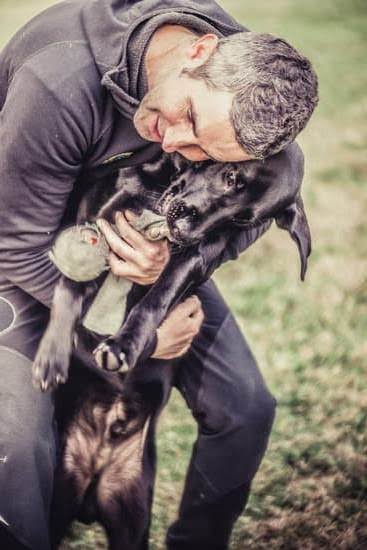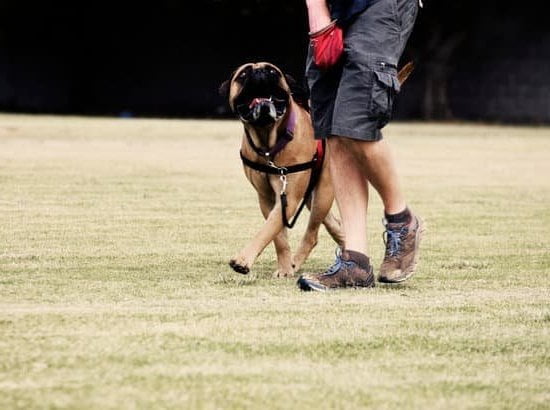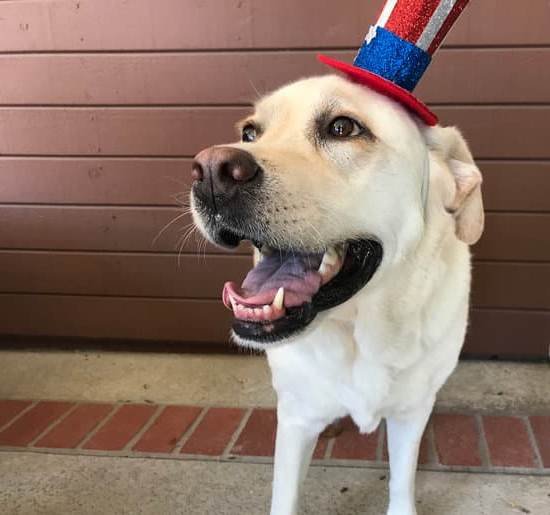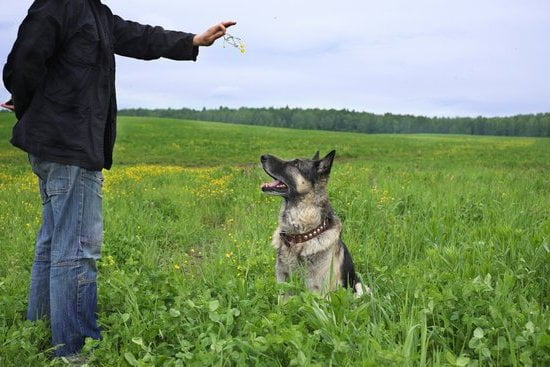Introduction
Training a dog to be off leash can be an incredibly valuable skill. It gives dogs the freedom to explore and feel more comfortable with their surroundings while allowing them more access to nature and socialization opportunities. This can greatly enhance their overall quality of life, providing them with physical and mental stimulation, which has numerous benefits, such as improved behavior and obedience. Additionally, teaching your dog to be off leash promotes safety, enabling you to maintain better control and visibility over them in any environment where they may find themselves. Finally, being able to take your furry friend off-leash allows you greater flexibility and makes running errands easier. All of these benefits make training your pup to be off-leash worth it in the long run.
The process of training a dog to be reliably off leash takes the right combination of consistency, patience, praise, guidance, boundaries, structure, and practice. Establishing good habits for your pet from the start is essential for successful learning before transitioning away from leashes or other restraint devices for walks in public places. A few common methods for teaching this skill include both desensitization exercises that increase a dog’s comfort level without a leash binding him down as well as reward-based drills that recognize desirable behaviors upon verbal command. There are also obstacles courses available that help in honing recall commands when running on trails or near distractions like other animals or people. With the proper motivation–whether treats or toys –and some practice over time, most doggies will learn even more tricky maneuvers like coming when called over a considerable distance or running around an obstacle course at full speed.
Benefits of Off-Leash Training
Training off-leash offers you a great level of freedom and flexibility. When on a long walk, you will not have to worry about your pup straying far away or getting lost since they are obeying your commands without the need for a leash. This leads to an increase in their obedience and reliability outside. Off-leash training also gives greater control when managing your dog around other animals and people. Not having to worry about your pup lunging towards someone can enable you to feel more relaxed, providing them with the responsibility to learn self-control in different situations. Ultimately, it develops into trusting that he will make sound decisions based off of his recall training and listening skills.
Essential Supplies Needed for Off-Leash Training
Training a dog to be off-leash can be a difficult and time-consuming process, but it is well worth the effort for responsible pet owners. Before beginning this type of training, you need to ensure that you have all of the necessary supplies. These include:
-A collar and leash: It is important to have a collar with an identification tag and extra strong leash or lead. The collar should be comfortable yet sturdy enough so your dog doesn’t slip out while they are still learning.
-Treats: Using treats to reward good behavior can help reinforce commands and motivate your dog during training. Choose treats that your dog loves, as these will be more effective.
-Clicker: A clicker is a great way to communicate quickly with your pup while they are off leash by making a distinct sound each time they do something right. It’s important to use the same clicker each time in order for them to connect their behavior with their reward.
-Long line: Long lines are essential when teaching your pup how to be off leash as it gives them freedom without putting them in harm’s way. Keep the long line around 10-15 feet long for maximum effectiveness.
-Command word list: Make sure that you know what commands you want to teach your pup before starting off leash training, so you can use similar cues consistently during each lesson. Common commands include “come”, “sit”, “stay”, and “leave it” among others.
Understanding the Basics of Positive Reinforcement Training
Training a dog to be off leash can feel like a daunting task, but it doesn’t have to be. Positive reinforcement training is the foundation of successfully teaching any skill or behavior and can easily be used when you want your pup to run free. Positive reinforcement is when you reward your dog for performing behaviors that you want them to do more of. Every time they do the desired behavior, a reward will be given – however, punishment should never be used as an incentive to achieve desired results.
To begin off-leash training, it is imperative that you first work on basic obedience commands such as sit, stay, come, and leave it. This will require patience and consistency as these fundamental commands are critical for ensuring your fur baby listens before ever attempting an off-leash excursion. It is also important for progress tracking; if you know that your pooch can reliably respond to its name in times where treats are not present you are setting yourself up for success. Once your pup has mastered these basics enthusiastically with the presence of treats or toys, then it’s time to move on to distraction proofing their knowledge in other environments beyond the home.
To accomplish this set up real world scenarios inside your house but slowly remove each distraction one at a time so that your can maintain control while frustratingly teaching problem solving skills – which will prove helpful outside after consistent practice in-house. Gradually provide more room by having them perform steps further away from their handler each time encouraging success by rewarding obedient behavior while monitoring the situation closely at all times. Once they begin following ordered commands in multiple spaces within various distractions only then is it time take training sessions outdoors with minimal bystanders around until noises and new scenery become commonplace and reliable before involving crowds and higher levels of stimulation to bring forth example worthy situations..
Establishing the Foundation for Off-Leash Training
Starting an off-leash training program requires three main elements: consistency, training environment and reward. Consistency is key when training a dog to be off leash as repetitive behavior helps them understand commands and systems. Additionally, it is important to find an ideal training environment — one that’s low distraction, but still allows the dog enough space to roam freely. Lastly, setting up a reward system can incentivize the animal with positive reinforcement whenever they obey certain commands or exhibit desirable behaviors when off-leash. Food rewards given immediately following the desired behavior will help the dog quickly internalize their expectations.
Training Your Dog to Recognize Cues for Off-Leash Training
Off-leash training for a dog is an important part of having an obedient and well-behaved pet. Off-leash training allows you to let your dog roam more freely, giving it the freedom to explore without being restricted. To start off leash training you will need to teach your pup basic obedience commands such as sit, stay, come, down, etc. This ensures that your dog knows the commands which can help when out on a walk. You should also develop cues or signals that your pup will recognize as indicating that they should behave safely when off leash. Cues should be short and easy to remember, like ‘low’ or ‘let’s go’. Over time, through repetition and consistent use, you will be able to teach your pup these cues so they will respond quickly and consistently away from the lead/leash environment. Along with verbal cues you can also train with agility or whistle types of commands for specific activities like retrieve items or running back to their owner. In addition to teaching commands you will also need to make sure that safety is always a priority during off-leash walks; this includes assessing if the area is safe (no danger from roads or other animals). With practice and patience, soon your pup could be enjoying all the benefits of being able t
Increasing Distance and Freeing the Leash
It is important to gradually increase the distance away from the dog that you can be and still expect your pooch to respond. This process should start while the leash is still attached, as it will give you a safety net should anything go wrong. To begin, call your pup’s name after taking a few steps away and reward them with a treat or a quick game of tug-of-war when they come back. Grow the number of steps you take away before calling your pup’s name and focus on rewarding for coming back even if its not immediate each time.
Another helpful tool for training off leash work is to walk with your pup on leash in an open area where there are plenty of distractions. Start out with lots of control by keeping tension on the leash, but then relax it bit by bit as your pup stops paying attention to external attractions. If they stay focused and near you, let them explore farther and farther away from you until eventually, the leash is almost slack. Just remember to keep checking in with them every few minutes whenever possible so that you retain control over their wanderings even when off-leash. Once the dog has mastered this task with the leash attached, let go of the lead completely when they get close enough – they will be pleased to have regained their freedom!
Practicing in a Secure Space and Establishing Good Habits
Training a dog to be off leash is a fundamental skill for many owners. This type of training requires an understanding of the principles of positive reinforcement and consistent timing in order to be effective. It is important to first thoroughly train a solid recall cue in a secure area, such as your own garden, using treats or toys as rewards for good behavior. Alternatively, in certain situations such as when practicing with a new dog, it may be best to use a long line made out of rope or fabric, so that you still have some level of control over the dog’s movements.
Once you have established good recall habits with your dog in a secure space, gradually begin taking him or her off-leash into areas with fewer distractions where the chance of them becoming lost are much lower. For example, you can practice at local parks or on wooded trails where there aren’t many other people or animals around. Gradually increase the amount and types of distraction during each session until your pet masters basic recall commands under any circumstances. Make sure that you always use positive reinforcement as any sort of punishment could put your pup off learning and damage your relationship.
When training for obedience off-leash it is essential to ensure that all members of the family have their roles clearly defined and consistently follow through with commands given by the main trainer. Multiple people should also practice together using different commands so that the pup learns what behaviour is expected from separate people and builds up trust across multiple individuals. Additionally, remember that patience and consistency are key when training any animal – practice makes perfect!
Gradually Introducing Outdoor Spaces
Training a dog to be off leash requires patience and consistent reinforcement. A great starting point is to do the bulk of your training indoors in an area that has minimal distractions. Start by setting up a small enclosure such as a baby gate in an open hallway or living room, if available. Begin practicing basic commands such as sit and stay within this area. Once your pup understands the commands well and responds reliably, it’s time to take your training outside! Move to an enclosed space like a fenced yard or park that will be less distracting than the wide open world outdoors. Repeat the same commands from inside your home so your pup knows what you expect from them in new surroundings. After each successful command, reward with treats as positive reinforcement. Continue practicing in these settings with increasingly longer stays until you bring your pup for walks around the block or park on leash. During these outings, encourage and reward any successes where your pup listens off leash before quickly rewarding them when they obey and come back when called! With enough practice and reinforcement, your pup should learn how to behave safely off leash in no time!
Potential Problems and Solutions for Off-Leash Training
Training a dog to be off-leash can have some interesting challenges. One of the main challenges is getting them to stay focused and remain in the area. The environment around them can be stimulating and they might not understand why they need to stay put. The key is to reinforce positive behavior using rewards and praise, while remaining consistent with commands and boundaries.
Another challenge of off-leash training is teaching your dog appropriate social behavior. If your dog is not used to being around other dogs they may become quite boisterous or assertive when faced with a new situation. This can lead to negative interactions with other dogs and people which can result in an unpleasant experience for everyone involved. To tackle these issues, look for ways to familiarize your pet with certain situations and corrective behaviors that could work best for you; this could include redirecting their attention away from negative triggers or utilizing a command such as ‘hush’ or ‘quiet’ when needed.
Finally, be mindful of where you are training your pet as it should ideally be in a safe place free of possible harm or danger such as major roads or busy intersections. Additionally, it’s important to consider the size of the space that you’re training in – it shouldn’t be too big that they become easily distracted but also not too small where they feel like they are cooped up in a corner! You want them to have enough room to run around without having too much space that they go astray and potentially get lost.
Conclusion
The best way to achieve success in training your dog to be off leash is to take the time and be patient. Training your dog can take several weeks or months depending on their age and the complexity of the commands you are teaching them. It’s important to stick with it, and remember that consistency is key for a successful outcome.
Once your dog has achieved a moderate level of obedience, you can begin teaching them more complex commands such as recalls, sit-stays, down-stays, and come when called from a distance. The process of teaching these commands should also include rewards, such as treats or praise when they get something right. To further solidify your dog’s understanding and progress, it is recommended that you practice these commands every day; this will help them better understand what is expected of them in an off leash environment.
Once your pup has mastered all their basic commands, it’s time to test their knowledge. You can do this in a safe environment like an enclosed yard or other open area. Gradually expose them to more challenging scenarios while building trust between the two of you by rewarding good behavior consistently. With patience and diligence, you will eventually find yourself being able to let your pup roam off-leash without worry of misbehavior—provided they stay within range! As long as you stay consistent with training and reward positive behaviors when appropriate, there’s no limit for what your pup can learn to do off leash!

Welcome to the blog! I am a professional dog trainer and have been working with dogs for many years. In this blog, I will be discussing various topics related to dog training, including tips, tricks, and advice. I hope you find this information helpful and informative. Thanks for reading!





